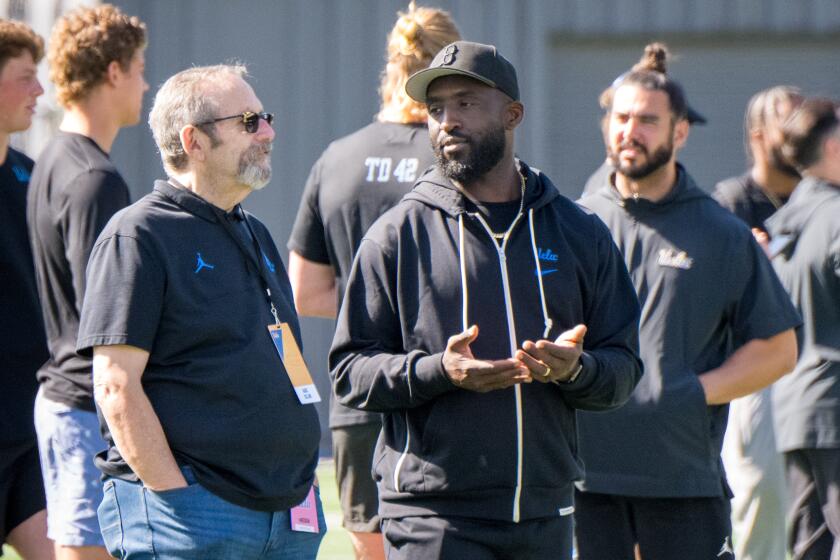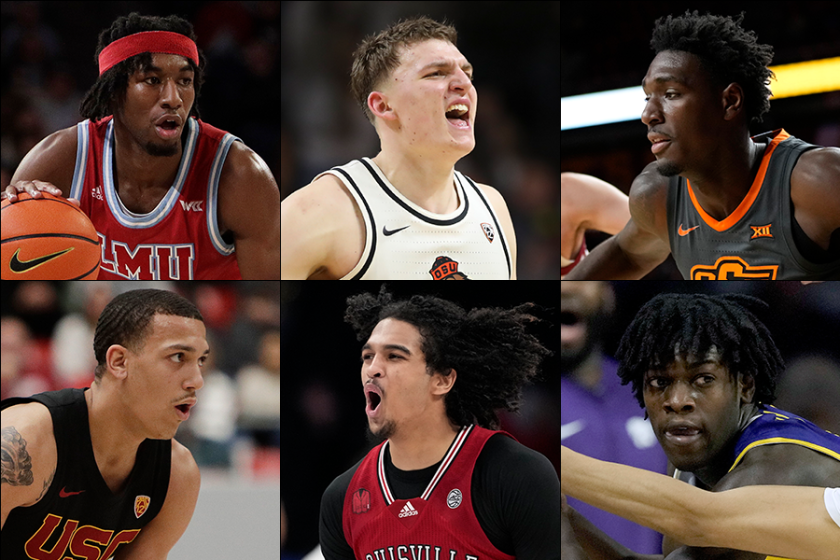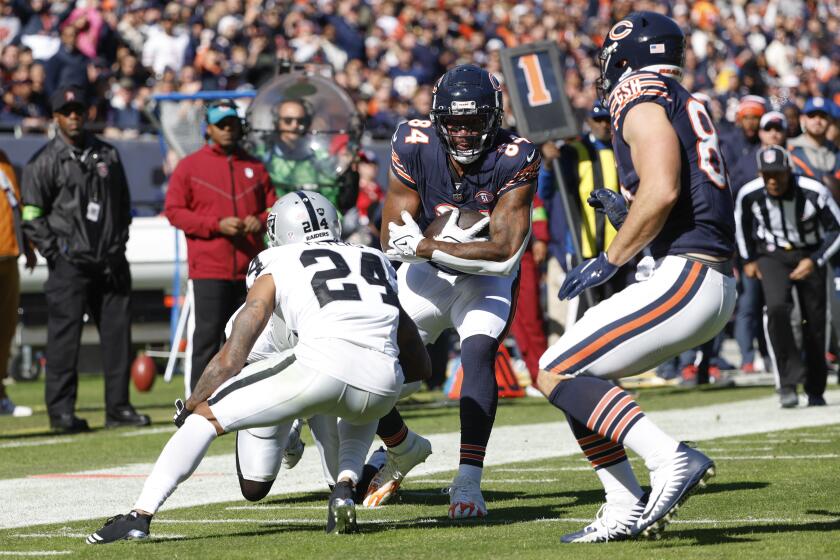College Division : It Pays to Play the Top Teams Once in a While
When Division I schools play lower division teams in men’s basketball games, the results usually are not pretty.
In fact, sometimes they get downright ugly.
Consider last week, when Division I power Kansas crushed tiny Pomona-Pitzer, 94-38, and Kansas State flattened Cal State Northridge, 91-46. In another game last week, Westmont of Santa Barbara managed to stay closer to Loyola Marymount but still lost, 100-84.
So why would a lower division school want to go on the road to play a good Division I school?
Coaches say it’s mostly for financial reasons but there is also the experience of facing Division I competition.
“The major reason is financial and not because we make a lot of money,” said Westmont Coach Chet Kammerer, whose team will also visit UC Santa Barbara and play in the Hofstra Tournament in New York. “It’s good for recruiting purposes. Every year we try to make a nice trip.”
Schools pay for the trips through financial guarantees from the Division I schools.
“The only way we can make a trip like the one to Hofstra is to get a (financial) guarantee,” Kammerer said.
Cal State Northridge Coach Pete Cassidy, whose team has played at Kansas State and Wichita State this season, said that the money his team gets from playing at a good Division I school helps keep his program afloat.
“Let’s just say it helps us significantly,” Cassidy said. “How much you get in guarantee money varies from school to school. But a couple of games against the right teams can really help (your program). We plan it so it helps pay for (the other games on) our schedule.”
Aside from the financial rewards, the coaches believe that their teams can benefit in the long run from an occasional game against Division I competition.
“It’s a good experience for your players,” Cassidy said. “You’re going to get better by playing good teams, not by playing easy ones. Of course, you don’t want to bury yourself.”
Added Kammerer: “We like the challenge of competing against a major college but there are a lot of Division I colleges we feel we can be competitive with. It also helps to play in front of a big crowd because if we make it to nationals, it’s played in a big arena and it’s nice to have that experience.”
For Pomona-Pitzer, which rarely plays Division I teams, the feeling of playing a game against a Division I power before a vociferous sellout crowd was something the Sagehens will not soon forget.
“We got beat by 56 points and our kids are still high as a kite,” Coach Greg Popovich said.
Popovich, who was a volunteer assistant at Kansas last year while on sabbatical at Pomona-Pitzer, said he was a little hesitant about playing Kansas when Jayhawk Coach Larry Brown made the offer after the NCAA playoffs last season.
“But he finally convinced me that it would be the experience of a lifetime for the kids to play his team in front of a big crowd,” Popovich said.
“I listen to reporters and they say, ‘These guys must be crazy, playing Kansas.’ But we had a total educational experience in mind when we decided to play them. We could play a good NAIA school and lose by 15 points, and it wouldn’t be nearly as good of an experience. As long as it’s an educational experience, I think once or so a year it can help you.”
Playing a lower division school is not without its risks for Division I men’s basketball teams. Just ask people at Northern Arizona.
The Lumberjacks played host to Biola, a member of the National Assn. of Intercollegiate Athletics, in a nonconference game Friday and were embarrassed by a 78-53 score.
Of course, Biola is not your typical NAIA team. The Eagles are 7-0 and figure to be ranked in the top 10 when the first NAIA rankings are announced.
“I think we can be competitive with some Division I teams,” Coach Dave Holmquist said. “There is a broad range of Division I schools. There are a lot of middle-range and lower-level Division I schools that I think we can be competitive with.”
But after Friday’s game, some Division I schools may think twice before scheduling a game against Biola.
“If I was a Division I coach, I wouldn’t want to schedule an NAIA team,” Holmquist said. “You have something to lose and not too much to gain.”
Northern Arizona found that out the hard way.
College Division Notes
The Cal State Northridge men’s soccer team ended its best season by losing to Southern Connecticut State, 2-0, in the NCAA Division II championship game Sunday in Tampa, Fla. It was the first trip to the final four tournament for the Matadors who were ranked No. 1 in the division and finished with a 19-2-1 record. . . . Westmont, which won the NAIA District III women’s volleyball title and finished 24-11 overall, placed outside hitter Joanna Rathbun on the NAIA All-American team. She is the first Westmont player ever to make the squad.
The Westmont men’s soccer team, which finished second to Biola in the NAIA District III, has placed six players on the All-Far West team selected by the National Soccer Coaches Assn. They are goaltender Butch Grosvenor, defenders Richard Smith and Shayne Wulterin, forwards Mike Walker and Mike Avery and midfielder James Thompson. Biola forward Dan Fosmire was also chosen. . . . The men’s basketball team of The Master’s may be growing tired of playing away from home. The Mustangs (3-5), who have yet to play a home game, will play their ninth consecutive road game when they visit Cal State Northridge Thursday.
Running back Chris Dabrow of Claremont-Mudd has been named Southern California Intercollegiate Athletic Conference offensive player of the year for the second season in a row. The senior rushed for 1,486 yards and led the NCAA Division III with an average of 165.1 yards a game. . . . Defensive back Rob Pesak of Whittier was named the SCIAC defensive player of the year.
Go beyond the scoreboard
Get the latest on L.A.'s teams in the daily Sports Report newsletter.
You may occasionally receive promotional content from the Los Angeles Times.



